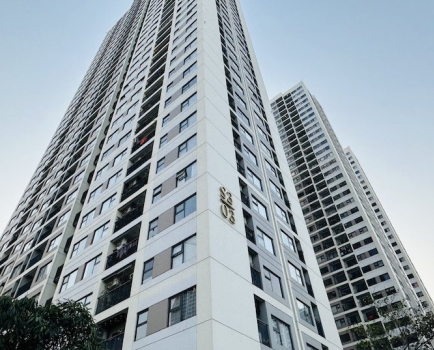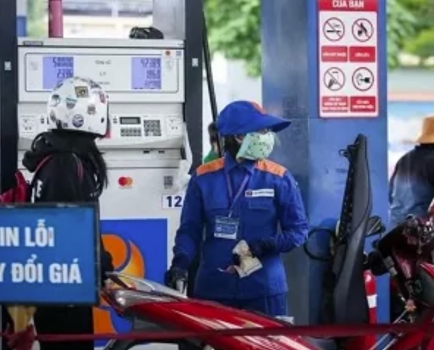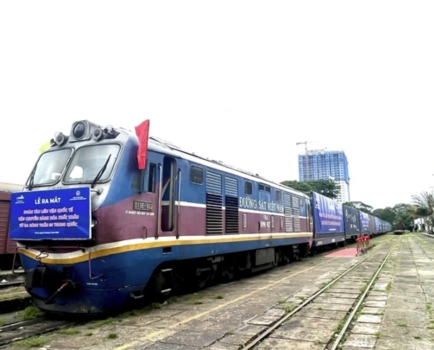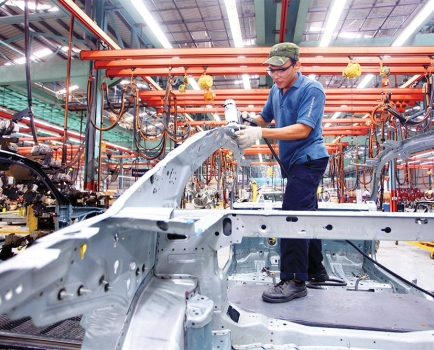Vietnam needs to act in Mekong Delta as land sinking, seas rising: experts
Tue, 05 Nov 2019 09:45:00 | Print | Email Share:
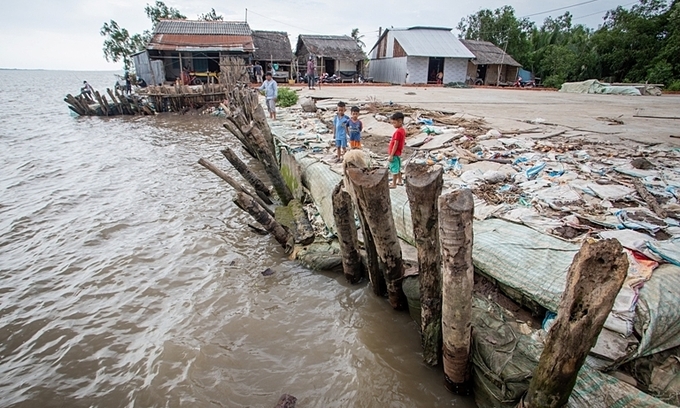
A makeshift embankment of poles and sandbags is put up in a coastal
neighborhood in Soc Trang Province, Mekong Delta, July 2019.
Photo by VnExpress/Thanh Nguyen.
With the Mekong Delta found to be lower than earlier thought, and subsidence and rising seas threatening a double whammy, alarm bells are ringing.
The Mekong Delta, the world's third largest and the place where the mighty Mekong River meets the sea after flowing through China, Myanmar, Laos, Thailand and Cambodia, plays a key role for Vietnam, both economically and geographically.
For decades the delta, which spreads over 40,577 square kilometers (15,670 square miles) and is possibly the lowest in the world, has been a rice bowl and aquaculture hub meeting not only the country's food demand but also serving exports.
Many studies in recent years have warned that the delta is sinking and might disappear within the course of a century.
But latest studies show that the disappearance could come sooner than thought.
Climate Central, a U.S.-based a nonprofit news organization that analyzes and reports on climate science, revealed a shocking finding this week which said most of southern Vietnam, including the Mekong Delta and the nation's economic hub, Ho Chi Minh City, could be flooded by 2050.
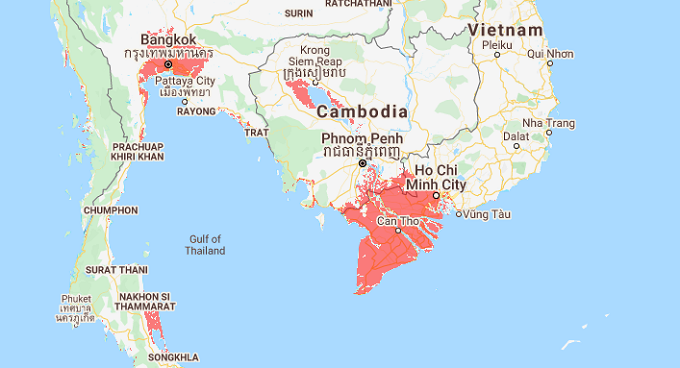
Red areas, including Ho Chi Minh City and Vietnam's Mekong Delta,
are land projected to be below flood level in 2050. Graphics by Climate Central.
The study, published in Nature Communications, said sea levels projected by that year are high enough to consign an area currently home to a total of some 150 million people permanently below the high tide line, which means rising seas could affect three times more people by 2050 than previously thought.
The majority of people living on affected land are in developing countries across Asia, and chronic coastal flooding or permanent inundation threatens areas occupied by more than 10 percent of the current populations of nations like Bangladesh and Vietnam and many Small Island Developing States by 2100, it said.
In September a group of Dutch scientists said the Vietnam's Mekong Delta has an "extremely low mean elevation" of just around 0.8 meters above sea level, which is dramatically lower than the 2.6 meters assumed earlier from NASA's Shuttle Radar Topography Missions data.
The study, conducted by a team from Utrecht University, estimated that at its current rate of subsidence the delta could be under 0.8 meters of sea within 57 years, requiring over 12 million people to relocate.
"Those are very important findings that further demonstrate the limited resilience of the Mekong Delta in the face of climate change and other human impacts across the river basin of the Mekong, notably hydropower and sand mining," Marc Goichot, freshwater lead at the World Wide Fund for Nature (WWF)'s Greater Mekong Program, said.
"Given this low relative elevation, the climate change induced sea level rise, and the fact that most of the area of the Mekong Delta is now sinking three to five times faster than sea level rise, and that river bank and coastal erosion is so serious and increasing, the situation is serious and calls for large scale transformative measures."
Dao Xuan Hoc, chairman of the Vietnam Academy for Water Resources, said the finding by the Utrecht University scientists is "very concerning."
The Mekong Delta’s subsidence was a "big problem" for Vietnam even before their finding, and now with the gap between the delta and the sea narrowed down, the situation is even more alarming, he said.
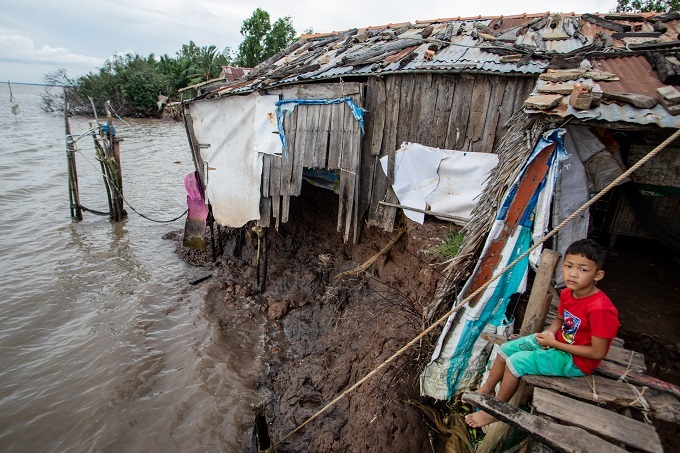
A boy sits at his house that has partly collapsed into the river
due to erosion in Soc Trang Province, southern Vietnam, July 2019.
Photo by VnExpress/Thanh Nguyen.
Tran Ba Hoang, head of the Southern Institute of Water Resources Research, said the steady subsidence of the delta has been proven through a number of studies, including those conducted by the Ministry of Natural Resources and Environment and the Norwegian Geotechnical Institute.
While many places in the provinces of Ca Mau and Soc Trang and Can Tho City are sinking at two to four centimeters a year, other areas are subsiding by 0.1-2 centimeters.
The environment ministry's scenario for Vietnam updated in 2016 said the sea level is expected to rise by one meter by 2100, which means the delta’s subsidence is now more rapid than that, he said.
This could intensify flooding in the coastal areas, especially the Ca Mau peninsula, seriously impacting the region's irrigation system, allowing saltwater to intrude deeper inland, affecting agriculture and aquaculture, and damaging houses and infrastructure, he warned.
In October last year Can Tho suffered its worst urban flooding of all time with many streets and houses in its inner area inundated under two feet of water.
Human impacts
A number of experts and studies have blamed the Mekong Delta's subsidence on the sea level rise caused by climate change and then, human activities, but they are all more inclined towards the side of human, holding rapid urbanization, groundwater exploitation, sand mining and dam operation accountable.
Le Anh Tuan, deputy head of Can Tho University’s Research Institute for Climate Change, and Hoang from the Southern Institute of Water Resources Research said it is obvious that areas with a lot of construction or where groundwater has been excessively exploited have seen the worst subsidence.
The increase in load as a result of rapid urbanization and construction of a lot of infrastructure on the delta's alluvial soil is one of the causes of the subsidence, Hoang said.
Ky Quang Vinh, head of the climate change office in Can Tho, said overexploitation of groundwater has caused the subsidence.
"It is possible that people in Can Tho do not use much groundwater, but they do in other locations in the delta."
A 2016 study by the Vietnam Association of Hydrogeology said that as of 2015 the groundwater level had fallen by 15 meters.
The study said if in the past water could be reached by digging around 100 meters, it now takes twice as much.
Philip Minderhoud, a member of the Utrecht University research team, said last week that the delta's coastal areas are sinking by two to three cm a year, and within the next 100 years the entire delta would be only 0.45 meters above the sea, which is very alarming.
This rate of sinking is much faster than that of other major deltas around the world, he said, pointing out it was 0.6-1.1 cm for the Mississippi Delta in the U.S. and 0-1 cm for the Po Delta in Italy.
If the delta continues to exploit groundwater at this rate, the region would not only subside, but what is left of the water would be contaminated by saltwater, and by 2100 the delta would either disappear or be left will salinated soil, he warned.
This is because the extraction of groundwater also affects the structures of aquifers, which allows saltwater to enter them, he explained.
"For every cubic meter of groundwater exploited, 12 cubic meters of water will be salinated."
He made it clear that shrimp farms, which dot the delta, are extracting much more groundwater than they should, and in the next 20 years the farms could be under the sea and that could affect both locals' livelihoods and the nation's economy, given that shrimp export is a mainstay.
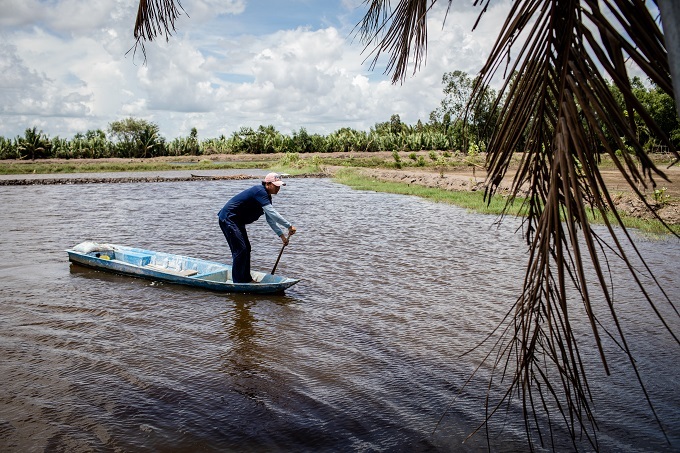
A farmer rides a boat on his shrimp farms in the Mekong Delta's province
of Kien Giang, July 2019. Photo by VnExpress/Thanh Nguyen.
Minderhoud also cited the significant decrease in sediments in the delta as another reason for the subsidence, and he blamed it on sand mining and the construction of a series of dams in the Mekong's upstream regions.
Some 70 million cubic meters of sand is estimated to have been extracted over a decade from the Mekong River, the WWF said in its Impacts of Sand Mining on Ecosystem Structure, Process and Biodiversity in Rivers report last year.
"The impacts of sand mining are being exacerbated due to the river undergoing a phase of intensive hydropower development, which is greatly reducing the sediment load of the river, with the ecosystems being impacted including the Tonle Sap, the Mekong Flooded Forest and the Mekong Delta, which are ecologically and socially important," it said.
Vietnam has announced it is likely to run out of sand by 2020, and is developing guidelines for use of alternative materials, the report said.
The Ministry of Construction said earlier this year the volume of construction sand exploited legally as of 2016 was almost 692 million cubic meters.
Demand for sand was 50-60 million cubic meters per year in 2015, and is expected to rise to 130 million cubic meters by 2020, the ministry calculated.
"Legal sources could only meet 40-50 percent of the demand."
The effect of dams on sedimentation was affirmed by a study last December by the WWF, Vietnam Rivers Network and People's Aid Coordinating Committee.
The Utrecht University researchers said: "While ongoing land subsidence increases the rate of relative sea level rise, the sediment load of the Mekong River to counterbalance the relative sea level rise with sediment accretion on the delta plain is dwindling due to upstream dam construction and decreased hurricane activity in the Mekong catchment."
The rapid slowdown in sedimentation is threatening the disappearance of the Mekong Delta, Brian Eyler, director of the Asia Program at the U.S.-based Stimson Center, a nonprofit think tank, said.
For every meter of seawater rise, the delta would lose 30 percent of its soil, he said at a conference in Hanoi in October on the impacts of Chinese policies on the Mekong River.
The Stimson Center ASEAN Infrastructure Database released in June said 102 dams have been built on the Mekong River, including 11 in China and 64 in Laos, also invested by China. Another 64 dams are under construction.
Those dams hold back water, sediments and fish that are supposed to move downstream during the annual flood season.
The Mekong River Commission has estimated the volume of sediments reaching the delta will drop from 143 million tons a year in 2007 to 47 million tons in 2020 and just five million tons in 2040 with all the dams going up.
Last summer the delta was hit by a drought that lasted months.
The annual flooding season usually comes in late July or early August and lasts until November, bringing extraordinary fertility in the form of silt. When the flooding does not happen or is late, cropping and fishing activities in the delta are disrupted.
This year, the flooding came later than ever, in mid-September.
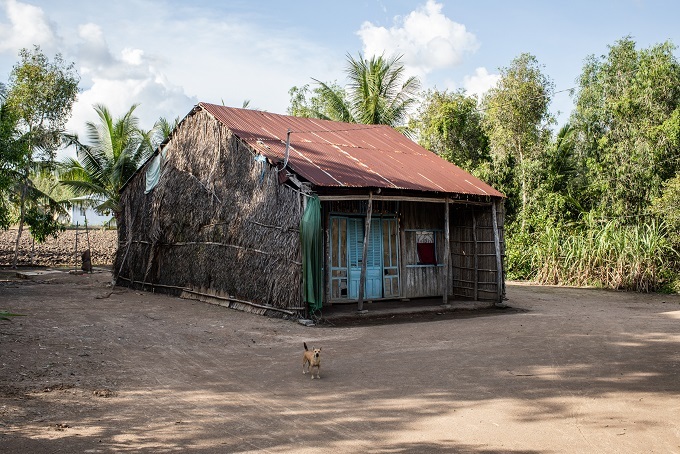
An abandoned house in Kien Giang Province July 2019. Its owners have left to work at a factory in Binh Duong Province neighboring Ho Chi Minh City as the conditions at home have become too harsh for farming.
Last year Vietnam exported a record $40 billion worth of agricultural products, a majority coming from the delta, with rice accounting for over $3 billion, shrimp for over $3.6 billion, tra fish for $2.3 billion, and vegetables and fruits for over $3.5 billion, according to official data.
The region grows 56 percent of the country’s rice, meaning Vietnam's food security is ineluctably linked with the delta’s fate.
This is why the MRC Secretariat said if the findings by the Utrecht University were accurate, there would be a need for the scientific community and governmental agencies to consider updating all of modeling works for further impact assessment and basin planning exercise by considering this fact and by preparing for better management and mitigation of salinity intrusion into the delta.
"The adaptation strategy and action plan to adapt to sea level rise should be carried out faster than we had planned because the problem coming from the sea level rise would occur earlier than expected," it said.
'Act now'
Minderhoud said Vietnam needs to have an emergency plan to cope with the situation.
He suggested the government should move diplomatically to reduce the negative impacts caused by upstream activities and take strong measures to end the overexploitation of sand and groundwater.
Other things the country could do to protect what is left of the delta include reinforcing and upgrading its anti-flooding system, growing mangrove forests and synchronize irrigation works across the delta instead of building embankments selectively, he said.
The Dutch ambassador to Vietnam, Elsbeth Akkerman, said Vietnam should act now to avoid more serious consequences and her country, with similar conditions as the Mekong Delta, is willing to help.
The WWF’s Goichot said the current situation confirms the important and urgent need to implement a government's resolution issued in 2017 on climate-resilient and sustainable development of the Mekong Delta.
"It is urgent to act within the Vietnam part of the delta by regulating groundwater use and sand mining and implementing a series or major [natural] projects like restoring wetlands and mangroves, and removing dikes that prevent sediment deposition to compensate for the natural and manmade land subsidence."
Prime Minister Nguyen Xuan Phuc told a government meeting held in June to review two years of implementing the delta development resolution that lack of funds is a major hurdle to building infrastructure and undertaking climate change adaptation projects.
He ordered the central bank and the ministries of planning and investment, finance and environment to develop a mechanism to raise funding from various sources, and said the delta region should prioritize climate change mitigation projects.
By: Minh Nga/Vnexpress
Source: https://e.vnexpress.net/news/news/vietnam-needs-to-act-in-mekong-delta-as-land-sinking-seas-rising-experts-4005471.html
---------------------------------------------
Same category News :




